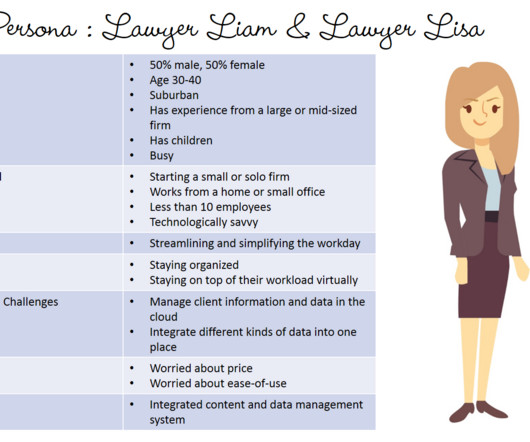Using customer personas for small business success.
Ruby
FEBRUARY 23, 2017
If you sell law software, you’re targeting lawyers. Your small business might have two customer personas, or you might need twenty. If you don’t have personas for your small business yet, now’s always a good time to start! Are they working out of home offices, small offices, or coworking spaces?













Let's personalize your content